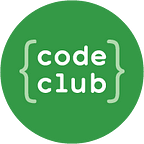Introducing learning paths: a new strategy to get your students coding
One question we often get asked is, how do I know what Code Club project I should pick for my class?
With over 100 self-guided projects for young people to learn how to code using tools like Scratch, Python, and more — it’s fair question!
That’s why in 2022, we’ve introduced a new way to help you select the Code Club projects to watch your students progress and become independent digital makers.
These are called Learning Paths.
Learning Paths explained
Each Learning Path is a series of six coding projects that are designed to scaffold learners’ success in the early stages, and then lets them build upon what they’ve learnt by providing them more open-ended tasks.
Each learning path has:
- Three explore projects to introduce new skills. These projects introduce learners to a set of skills and knowledge, and provide step-by-step instructions to help them develop initial confidence.
- Two design projects to practice the skills learnt and bring in their own interests. Learners are guided through creating their own version of a project (such as a musical instrument, an interactive pet, or a website to support a local event). They are given code examples to choose, combine, and customise. No new skills are introduced at this stage, so learners can focus on designing a project based on their own interests.
- One invent project that asks young learners to use the skills they’ve practiced to meet a project brief. The project brief is written so that they can meet it using the skills they’ve learnt by following the path up to this point. Learners are provided with reference material, but are free to decide which skills to use. They need to plan their project and decide on the order to carry out tasks.
As a result of working through a path, learners are empowered to make their own ideas and create solutions with increased independence. And in order to develop more skills, learners can work through more paths, giving them even more choice about what they create in the future.
Introduction to Scratch: sprites, scripts, and loops
Our first Learning Path to be released is an Introduction to Scratch: sprites, scripts, and loops.
Step-by-step instructions guide your young learners in how to add code, costumes, and sounds to sprites as they make animations, a game, an app, and a book over six lessons.
This is six brand-new lesson plans for beginners in block based programming, or six hours of coding classes.
Like all our projects, each project can be completed online on any computer within 1 hour, and include step-by-step guidance.
We’ve also now released an Introduction to Python Learning Path. Learn more about this path and how it can help your students take their first steps beyond block-based coding here.
Additional resources & projects
For each Learning Path we will be providing additional resources to support you teach the class.
Here are some additional resources for the Introduction to Scratch Learning Path:
- Learning outcomes by project
- Certificate of Completion to award your students on completion of the path
We also have a collection of additional projects at each skill level so that your young learners can continue to hone their skills before advancing to the next level.
More advanced learning paths to come.
Happy coding!
Natalie Falzon, Code Club Australia
